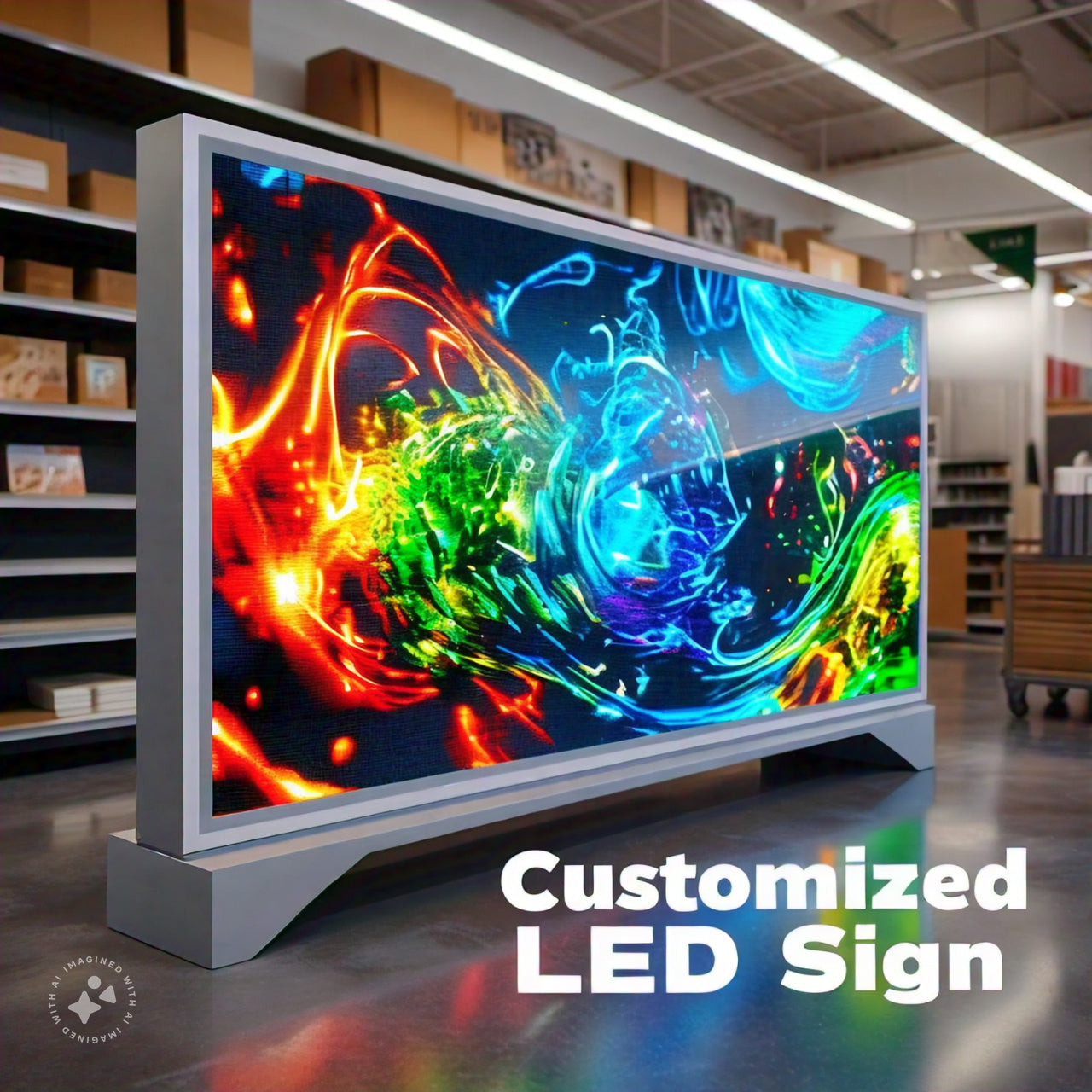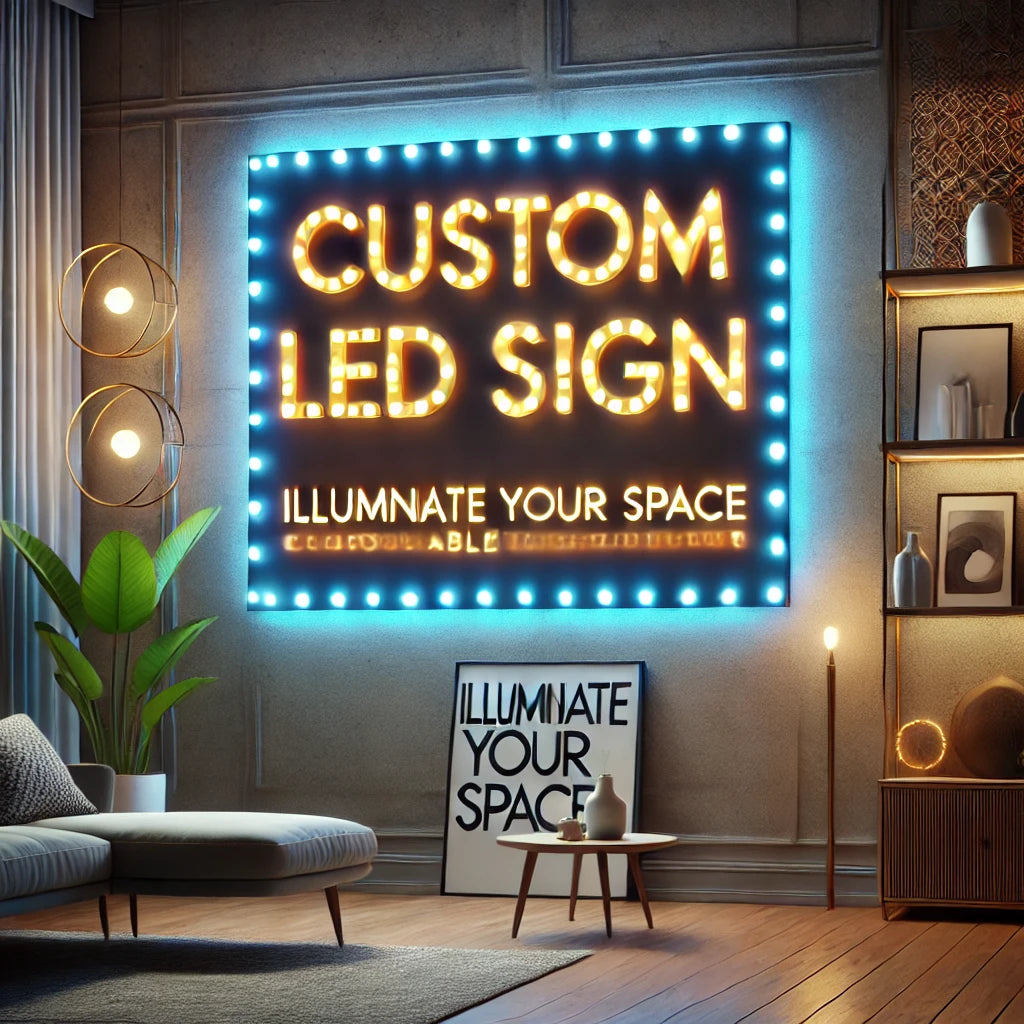Introduction to Custom LED Signs
Custom LED signs have become increasingly popular for businesses seeking to enhance their visibility and communication. These signs utilize light-emitting diodes (LEDs) to display vibrant, eye-catching messages, graphics, and animations. Unlike traditional signage, custom LED signs offer greater flexibility, dynamic content, and lower energy consumption. As technology has advanced, these signs have evolved into sophisticated marketing tools that can effectively convey messages, promote products, and engage customers.
1. Understanding LED Technology
At the core of custom LED signs is LED technology. LEDs are semiconductor devices that emit light when an electrical current passes through them. This technology has several advantages over traditional incandescent and fluorescent lighting:
- Energy Efficiency: LEDs consume significantly less power, making them a cost-effective option for long-term use.
- Longevity: LED signs can last for tens of thousands of hours, reducing the need for frequent replacements.
- Brightness and Visibility: LED signs are brighter than traditional signs, ensuring that messages are visible in various lighting conditions, including direct sunlight.
- Color and Animation: LEDs can produce a wide spectrum of colors and can be programmed for dynamic animations, allowing for creative and engaging displays.
2. Benefits of Custom LED Signs
Businesses can reap several benefits by incorporating custom LED signs into their marketing strategy:
- Enhanced Visibility: Custom LED signs attract attention with their brightness and dynamic content, making them stand out from traditional signage.
- 24/7 Marketing: Unlike static signs that only convey a message during business hours, LED signs can communicate around the clock, capturing the attention of potential customers at any time.
- Flexible Messaging: Businesses can easily change messages and graphics to promote different products, events, or promotions without the need for new signage.
- Cost-Effective Advertising: With low energy costs and minimal maintenance, LED signs can provide a strong return on investment compared to other forms of advertising.
- Engagement and Interaction: Dynamic displays can engage customers more effectively than static signs. For example, LED signs can feature countdowns, special offers, or interactive elements that encourage customer participation.
3. Applications of Custom LED Signs
Custom LED signs can be utilized across various industries and settings. Some common applications include:
- Retail Stores: Businesses can use custom LED signs to showcase sales, promotions, and new arrivals. For instance, a clothing store might use an LED sign to display a flashing "50% Off" message, drawing customers into the store.
- Restaurants and Cafes: LED signs can highlight daily specials, menu items, or promotions, enhancing the dining experience. Digital menu boards are becoming increasingly popular in fast-food restaurants, allowing for quick updates.
- Events and Trade Shows: Custom LED signs can be used at events to draw attention to booths, provide information, or showcase brand messaging. They can also display schedules, maps, or interactive content at large gatherings.
- Corporate Settings: Businesses can utilize LED signs for internal communication, displaying announcements, employee recognition, or safety messages in lobbies and common areas.
- Transportation: Airports, train stations, and bus terminals often use LED signs to provide real-time information about arrivals, departures, and delays.
4. Design Considerations for Custom LED Signs

When designing custom LED signs, businesses should consider several key factors:
- Message Clarity: The primary purpose of a sign is to convey a message clearly. The text should be easy to read from a distance, with appropriate font sizes and contrasting colors.
- Visual Appeal: The design should be visually engaging, incorporating colors, graphics, and animations that align with the brand's identity and appeal to the target audience.
- Content Management: Businesses should have a plan for managing and updating the content displayed on their LED signs. This may involve using software that allows for easy scheduling and content changes.
- Location and Placement: The effectiveness of an LED sign is significantly influenced by its placement. It should be positioned where it will attract the most attention, whether that's near the entrance of a store or at a busy intersection.
- Size and Scale: The size of the LED sign should be appropriate for its location and the intended message. A larger sign may be necessary for high-traffic areas, while smaller signs can be effective for indoor use.
5. Choosing the Right LED Sign Manufacturer
Selecting the right manufacturer for custom LED signs is crucial for ensuring quality and effectiveness. Here are some factors to consider:
- Experience and Reputation: Look for a manufacturer with a proven track record in producing custom LED signs. Reading reviews and testimonials can provide insights into their reputation.
- Customization Options: Ensure the manufacturer offers a range of customization options, from size and shape to color and animation capabilities.
- Technical Support: A good manufacturer should provide technical support for installation and maintenance, ensuring that businesses can quickly resolve any issues that arise.
- Warranty and Guarantee: Inquire about warranties and guarantees on the product, which can provide peace of mind regarding the investment.
6. Regulatory Considerations
Businesses should be aware of any regulations or restrictions regarding the use of LED signs in their area. This may include zoning laws, brightness limits, and content restrictions. Checking with local authorities or obtaining permits before installing an LED sign is essential to avoid potential fines or required modifications.
7. Case Studies: Successful Use of Custom LED Signs
Several businesses have successfully leveraged custom LED signs to enhance their marketing efforts. Here are a few examples:
- Local Restaurant: A local diner installed an LED sign outside their establishment to promote daily specials and community events. The sign's dynamic content attracted more foot traffic, leading to a significant increase in sales.
- Retail Store Chain: A national retail chain utilized LED signs across its locations to promote seasonal sales and new product launches. The ability to update messages remotely allowed for timely promotions that boosted customer engagement.
- Fitness Center: A gym used an custom LED signs to showcase membership deals and highlight classes. The vibrant display attracted potential members, leading to a 30% increase in sign-ups during the promotional period.
8. The Future of Custom LED Signs
As technology continues to advance, the future of custom LED signs looks promising. Innovations in LED technology, such as improved energy efficiency, higher resolution displays, and integration with smart technologies, will likely enhance the functionality and appeal of LED signage.
Additionally, the rise of digital marketing and social media may lead to more interactive and engaging content on LED signs. For example, businesses could integrate QR codes that direct customers to online promotions or social media pages, creating a seamless connection between physical and digital marketing efforts.
Conclusion
Custom LED signs represent a powerful tool for businesses seeking to enhance their marketing and communication strategies. Their vibrant visuals, energy efficiency, and dynamic content capabilities make them an attractive option for various applications, from retail to corporate environments. By understanding the benefits, applications, design considerations, and choosing the right manufacturer, businesses can effectively utilize LED signs to capture attention, engage customers, and ultimately drive sales. As technology continues to evolve, the potential for LED signs to transform the marketing landscape remains vast and exciting.




